 |
 |
| |
|
| |
|
|
| |
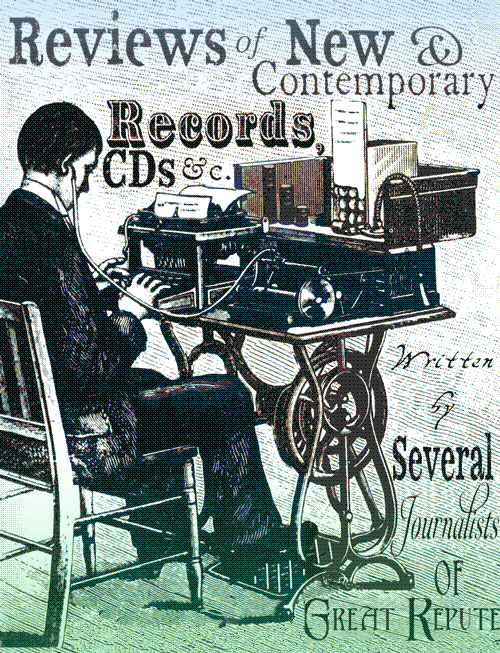 |
|
| = February 2013 = |
|
|
| Gnod |
| Horace |
| Anthroprophh |
| Wind |
| Family |
| Leo Svirsky |
| Horse Lords |
| My Beloved |
| The Cyrillic Typewriter |
| The Luck of Eden Hall |
| The Electric Stars |
| Lichter & Stringfellow |
| Brother Ong |
| Evening Fires |
| Jacco Gardner |
| Maston |
| Children's Hour |
| Josephine Foster |
| Reggie King |
| Godspeed! You Black Emporer |
| Alien Ballroom |
| Flowers Must Die |
| Psychedelia book |
| Nick Riff |
| Lichens |
| Annelies Monsere / Cicle Brothers split |
|
| |
|
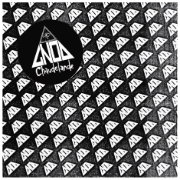
Home |
GNOD – CHAUDELANDE
(CD/DL from Rocket Recordings
www.rocketrecordings.com
and Ltd edition LP from Tamed Records
www.tamedrecords.com
These are truly exciting times for the neo-psychedelic music scene in the UK, particularly the North of England which has recently become a hotbed of some stunning talent. Leeds has its Hookworms, for instance, while Liverpool has given us the mighty Mugstar. Just a few miles inland, Manchester, musically-speaking the single most important place in the British Isles in the past 40 years has, arguably, spawned the pick of the crop in Dead Sea Apes and this lot... the one, the only Gnod.
This Islington Mill collective have made their name with some landmark releases such as their double header with the equally sublime White Hills and the Pope-prodding “InGnodWeTrust”. Chaudelande, which brings together their Chaudelande Volumes 1 and 2 vinyl only releases on Tamed Records, takes things to a different level entirely with its cranked up beats, high voltage mesmeric rhythms and, echo-drenched vocals. Those who thrilled to their captivating performance at last year’s Supersonic Festival in Birmingham will take comfort in the fact that the core of that outstanding set forms the basis of Chaudelande. This includes opening number “Tron” which, coincidentally, kicked off their Supersonic show and is a veritable feast of super charged and most definitely attention grabbing, Hawkwind-style, bludgeon riffola. “Visions of Load” settles into a glorious and metronomic Wooden Shjips groove underscored by a deep and insistent base while the wonderfully named “The Vertical Dead” is a woozy, lysergic slow-burner, but one which builds burbles and froths into a lengthy work of madness and is an emphatic triumph of art and form. The shamanic “Man On The Wire”, by comparison, seems to tread water until, quite abruptly, the mood changes and it is propelled by the seat of the pants into a whole new dimension courtesy of some energetic, almost jazz-like drumming, Jim Dunlop turbo charged guitar and Metal Box-style funereal football terrace chanting. The peerless “Entrance” is propelled by more crisp and, precise drumming and by now the effect is one of almost relentless abandon as the Gnod ghost dance tightens its grip, the wah wah guitar used to ever more devastating effect. Salford Space Rock this may be but the Gnod sound seems to be influenced as much by the region’s industrial heritage as by stratospheric sonic exploration. There are few places other than Manchester where you could imagine the jaw-dropping “Genocider” emanating from, a near brutal assault on the senses which deconstructs to the same two or three notes over which you can easily imagine Ian Curtis intoning or Mark E Smith wheezing-uh. This is a startling finale to what is a powerful and compelling offering from end to end in which disparate yet wholly complementary influences (Hawkwind, PiL, Krautrock and industrial strength cyber punk to name but some) combine to provide the most stunning and aurally fulfilling experience.
Unreservedly recommended, so go get... (Ian Fraser)
Chaudelande is released by Rocket Recordings on 25th February 2013. |
| |
|
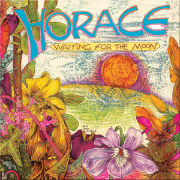
Home
|
HORACE - WAITING FOR THE MOON
(7" record from Shagrat Records )
Originally recorded in 1971, but never released until now, the three tracks from Horace reveal a band who could hold their own amongst their underground peers with ease. Featuring Ric Parnell and Jim Mercer, both veterans of the sixties underground scene (Ric had been in Atomic Rooster), “Waiting for the Moon” is a wonderful piece of U.K. psych/prog sounding not unlike an early Kevin Ayers tune, the music rolling and tumbling from the speakers dancing to some fine violin playing courtesy of Mike Piggott. Opening gently, “See The Sun” reminds me of East Of Eden meeting Caravan on an English hillside, a lovely pastoral feel evident in its sunny grooves. To end a lovely 7” (complete with gatefold sleeve) “Mongrel/Polyop is a mainly improvised instrumental that features some more fine violin and the sort of good-time feel that is found on many classic albums of the period. Graced with extensive sleeve notes from Colin Hill and some excellent period artwork, this single has got it all and you should all go and get one, the sort of item that makes the Terrascope smile. (Simon Lewis) |
| |
|
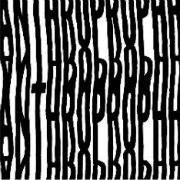
Home |
ANTHROPROPHH – s/t
(LP/Download from Rocket Recordings
www.rocketrecordings.bandcamp.com)
Solo albums by members of The Heads aren’t what you might expect, it seems. Why just a couple of years back, the Bristol psych-rock legends’ singer/guitarist Simon Price raised the odd eyebrow with “Peaceful Lane”, a collection of largely pleasant, acoustic ruminations delivered in a surprisingly agreeable Chris Rea type baritone, or Nick Drake on roll-ups if you prefer. This welcome release from pyrotechnic lead guitarist Paul “Rock Prof” Allen – one of the most incendiary “lefties” to have stroked the old six-string lacquered plank since the demise of one J M Hendrix - whilst not so stark in terms of stylistic contrast is never the less a more laid back and thoughtful affair than might be imagined.
Not that this is particularly evident from opener “Hermit”, you understand. A brutal absence of any foreplay propels us headlong into the mid section of yer typical Heads freakout, six minutes or so of reassuringly ear singing business as usual, all washes and stomp boards and amps turned up to 11. Part way through, we are treated to a voiceover reminiscent of some cheesy but fun hippie exploitation tracks from the nether-vaults of the Pebbles archive. All tremendously thrilling I’m sure you will agree, but over the course of a whole album might give the impression of a collection of Heads outtakes and whilst that would be agreeable enough to these ears it might be perceived as a wasted (!) opportunity to demonstrate a more varied and innovative palette. Worry not, though, voyager. Brief pastoral relief comes in the fleeting form of the acoustic and beguiling “Discretion Shot” as prelude to a series of astral inclined aural projections remarkable for their understated, pitter-patter percussion and a distinct Harmonia school of Krautrock treatment. The most notable of these fine (mostly) instrumental explorations is the 16 minute “Entropy”, a deep space mission to one of the darker and more mysterious satellites of Planet Gong, perhaps, and “We”, a succinct approximation of what you imagine an ambient remix of Hawkwind should sound like, with twittering synths and cavernous-sounding flute to the fore. Season the whole dish with some Saucerful-era Floyd, give a good stir, bring to a simmer then lay back and enjoy.
This kind of cosmic noodling is clearly not to some people’s taste but at the risk of sounding self-indulgent (and I might ask for a countless other offences to be taken into consideration at this point, Your Honour) that would clearly be some people’s loss. It won’t receive any airplay and it won’t win the Mercury Award (unless we’re talking Planet Mercury maybe) so the only way to get to know and love this is to contact those nice people at Rocket Recordings, and stop ’em and buy one. Furthermore Allen is promising some gigs to promote the album’s January 2013 release and we can but hope that the mutha group, of whom sightings are preciously few and far between, also sees fit to grace us with their live and loud presence at some point in the near future. (Ian Fraser ) |
| |
|
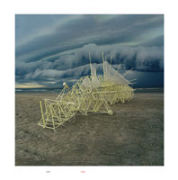
Home |
WIND - THROWING STONES
(10" record from Jansen Plate)
This is a rather beautiful white vinyl 10” from Norwegian band Wind, including two long psychedelic tracks that feature some inspired and heavenly playing. On “Throwing Stones” a relaxed West-Coast riff slowly turns into a stellar guitar workout from Martin Van Houtum, the notes and twinkling and rippling through the void, the sonic beauty perfectly complimented by sterling work from Filip Ramberg (drums) and Per Christian Berg (bass), the addition of a mellotron floating in the background the final piece of loveliness to be discovered. Turning the disc over you find “Cathedral” shades of the Grateful Dead coiling round another magnificent slice of West-Coast perfection. From its languid opening the track slowly levitates into deep space, heading straight for planet mellow, a glorious musical haze of tremendous beauty that will make the hairs at the back of your neck shine with golden light. (Simon Lewis) |
| |
|
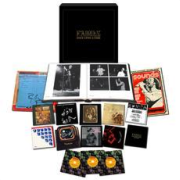
Home |
FAMILY – ONCE UPON A TIME
(14xCD career retrospective from Snapper Music http://www.familyonceuponatime.com/ )
Now here’s a treat. Snapper Music is set to release the entire Family catalogue comprising seven studio albums (plus compilation “Old Songs New Songs”) all in mini-LP Japanese style gatefold sleeves, their posthumous live album, two discs of outtakes and alternative versions and three CD singles with original picture sleeves – 14 discs in all plus a sumptuous sounding 72-page booklet
Of all the British bands which came to prominence in the wake of the 60s blues boom, Family remain one of the most idiosyncratic and overlooked. Lacking the glamour of a Stones or the pedigree of a Zeppelin (and the blatantly raunchy appeal of both), the out-and-out aggression of The Who or the visual stage craft of Jethro Tull, this Leicester combo traded on pure musicianship, centred around the guitar playing of John “Charlie” Whitney and the singular glass-gargling bellow of front man, Roger Chapman, a voice that, to quote one commentator “could kill small game at a hundred yards”. Brief notoriety was theirs when they featured in Jenny Fabian’s exploitation pulp novel “Groupie”, where they were called “Relation” – no, really – otherwise they are best remembered for some classic singles and occasionally riotous live performances without quite breaking into the Prog-rock Premiership or ever making it big in the US of A..
Best described, perhaps, as a blues-based band with art-rock leanings, Family packed one hell of a lot into just six years of recorded output between 1968-73, not only in terms of number of releases but the expanse of ground covered. Aside from the constant stars of Chapman and Whitney, the rest of the band was ever changing, with the likes of Poli Palmer and Jim King (keys/vibes/wind/strings), a roll-call of bassists including Rick Grech, Jim Cregan and John Wetton, and pianist Tony Ashton all passing through the ranks at various stages (Rob Townsend kept the drum seat warm throughout). It’s no wonder that despite Whitney/Chapman garnering most of the song writing credits no two albums were quite the same. The ever-evolving sound added to the experimental appeal (and occasionally frustration) was probably as much their undoing as it was their creative strength as they became difficult to pigeon-hole in an era which was seemingly fixated with rock genre. “Strange Band”, indeed!
Family first came to public attention in 1968 with their proto-progressive, psychedelically inclined debut album Music In A Doll’s House, produced by Dave Mason and which, courtesy of Mason, features the only track recorded by the band not to have been composed by them (hey, you’ll thank me for this should it ever come up in a pub quiz). Hailed by some as one of the most impressive debut albums ever and a defining moment of the immediate post-psychedelic period it is a curious juxtaposition of style and substance, with Chapman’s bluesy vocals and the occasional belter ( “Old Songs New Songs” for example) balanced by mellotron, orchestration and lots of paisley-sounding paraphernalia (“The Chase”, “Mellowing Grey”). Elsewhere (“See Through Windows” for instance) we get a glimpse of what would become a slightly annoying tendency to flit about, gadfly style, with tempos and signatures. Oh yes, and Mason’s contribution (“Never Like This”), had he sang it, could have been lifted seamlessly from “Mr Fantasy” such as its style and quality. It all still sounds mightily impressive if somewhat of its time and occasionally overly ornate, with Chapman superb throughout. Criminally overlooked, Doll’s House is overdue for the sort of re-appraisal and exposure afforded to “SF Sorrow”, of which this is every bit as good. The version here also benefits from the inclusion of the single “Scene Through the Eye of a Lens/Gypsy Woman”.
1969’s Family Entertainment was a slightly less elaborate offering but features some strong song writing and arrangements, notably the single “The Weaver’s Answer” and a few others including “Summer of 67’”, “How Hi The Li” whilst more unbridled, rockist tendencies were give vent on the likes of the guttural “Hung Up Down” . A worthy successor to Doll’s House, Family Entertainment reached No.6 in the UK charts compared with its predecessor’s 35th position, deservedly cementing their reputation on home ground.
Following a disastrous tour of the US, when Chapman was accused of throwing his mic stand at Bill Graham (in fact an unfortunate and unintentional outcome of some typical on-stage exuberance) and subsequently losing his voice, the band played at the Stones’ famous Hyde Park gig, sacked Jim King for “erratic behaviour” and replaced him with Poli Palmer. The ensuing album, 1970’s A Song For Me (their highest ever UK album chart placing at No. 4) - dispensed with the psychedelia and instead mixing blues belting hard rock and folk rock, the rasping unrestraint of the title track and “Drowned in Wine” bookending a quite schizophrenic collection lent a certain jazzy sophistication by the multi-instrumentalism of Palmer but without ever losing the route-one, primal appeal of the Chapman/Whitney axis.
Anyway (1970) is one-half live and one-part studio album and is a recommended introduction to anyone unfamiliar with the band. The opening number “Good News, Bad News” is the acme sound of Family on stage, Chapman’s manic, gale force bellow to the fore, like a battle- hardened old mountain goat with its nuts caught on a barbed wire fence, with some tremendous rhythm and lead guitar courtesy of Whitney, and Palmer’s vibraphone adding a tastefully restrained edge to the instrumental passages. Old busker numbers (“Holding the Compass”) jazzy ballads (“Willow Tree”) and dramatic tension (“Strange Band”) give depth and breadth to what has always been something of a personal favourite if not exactly the most widely acclaimed of the Family oeuvre. That would come next.
Spend enough time around music fans and eventually you’ll get into a game of “great musical intros”, usually involving singles, and which one of these is the best. More often than not the list will include Curtis Mayfield’s “Move On Up”, “London Calling” and “Pretty Vacant” as well as “Waterloo Sunset” (which is of course is the right answer). What inevitably attracts puzzled and occasionally disdainful sideways glances is mention of Family’s “In My Own Time”. Without any hint of warning Chapman hurtles straight into his best whisky mouthwash holler for a brief few seconds. Silence, then repeat. Not particularly catchy, perhaps, but as a means of getting your attention it yields to no-one. As a 10-year old at the time it left an indelible impression on me – in fact the single is still around here somewhere – and it still raises the hairs on the back of the neck (such as I didn’t have aged 10). It reached No 4 in the singles chart, their most commercially successful hour. The tie-in album Fearless (1971) whilst probably the most restrained of all the Family albums is perhaps also the most enduring. The highlight is the punchy, at times almost funky “Take Your Partners”, featuring some classy Whitney guitar and showcasing the Chapman-Whitney-Palmer-Wetton-Townsend line-up at its most fluid and sublime. The eerily playful, almost carnival quality of “Blind” also deserves special mention here as does the closing “Burning Bridges”, again notable for the cohesiveness of the band as well as some beautiful guitar refrains. The live album which features as part of this box set was taken from the Fearless Tour of 1971.
1972’s Bandstand, the last with Wetton and Palmer on board, is probably best remembered for the singles “Burlesque” – four minutes of splendidly soulful rock and dissolute subject matter and a candidate for Their Finest Hour – and the acoustic “My Friend The Sun”, which might just as easily have graced an early Genesis album as that of the penultimate studio offering by Leicester’s finest (with apologies to Kasabian and none at all to Showaddywaddy). All told, though, Bandstand is one of the rockier and most straight-ahead of Family’s releases and one which Chapman considers to be among their finest. Certainly “Ready to Go”, as well as the singles, stands comparison with the best they had to offer.
By the time of It’s Only A Movie (1973), Jim Wieder and Tony Ashton had joined and the band was clearly running out of gas. Released to a largely indifferent listenership it proved to be a somewhat lacklustre swansong (“Buffet Tea for Two” and “Boom Bang” notwithstanding) with Ashton’s muscular barroom honky-tonk failing to fill the gap left by Poli Palmer. They called it a day late in 1973. Chapman and Whitney went on to form the often-raucous “Streetwalkers” before Chapman achieved considerable solo success in Germany. Wetton found acclaim with King Crimson, UK and Asia while drummer Townsend has, since 1979, anchored the Blues Band and the Manfreds. Ashton, Grech and King are sadly no longer with us. Whitney now lives in Greece. In February 2013, Chapman, Palmer, Cregan and Townsend will play a reunion gig in London.
Aside from the studio albums, the singles and the live album there are two discs of outtakes and work in progress together with, we are told, some priceless in-studio banter which have apparently been gathering dust in Chapman’s loft. I’ll take their word for it as this wasn’t available at the time of writing and neither was the 72-page hard back book and magazine which, had they been, might have made your reviewer’s job a little easier but less of a rewarding challenge, I’m sure. Anyway the whole thing sounds a hoot and can be yours for £125 plus p + p with each of the 2,000 numbered copies signed by Roger Chapman.
Once Upon A Time will be released by Snapper Music on 4th February 2012 but is available to pre-order (follow the site link, above)
(Ian Fraser) |
| |
|
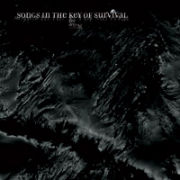
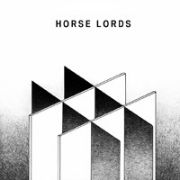
Home
|
LEO SVIRSKY - SONGS IN THE KEY OF SURVIVAL
HORSE LORDS - HORSE LORDS
(LPs from Ehse Records )
“Songs in the Key of Survival” by Leo Svirsky is an improvised piano led album inspired by the recent revolutionary struggles across the globe. Mixing modern improvisations that bare witness to Cage, Feldman or Ligetti with stark political songs that remind you of Robert Wyatt, this is a thoughtful and engaging collection that needs attention. Whether it is the frenetic improvisation of “A Storm Blows From Paradise”, or the quiet desolation of “Internal Devaluation”, you will find yourself engaged, each side of the musical menu complimenting the other. Never going to be an easy listen, this is an album for people seeking a deeper musical experience, one that demands a degree of intellectual listening, a quiet place for reflection.
Needing to be listened to in a different way, more physical than cerebal, the self-titled album by Horse Lords features two long hypnotic Kraut style workouts that pulse and writhe with crackling energy and the expectation that volume is involved. First up, “Wildcat Strike” has an intriguing layer of latin percussion under the repetitive guitar and bass, giving the song a strange off kilter feel, although this slowly fades as a more rock approach comes to prominence, albeit in groove-laden, poly-rhythmic way. As the track progresses there is plenty of variations and textures to make the journey interesting, the whole band playing off against each other with purpose, the track gaining in intensity as it rolls ever onwards. Towards the end skronking brass joins the party, adding a manic jazz feel, elevating the track to new heights before it ends in a shimmering rattle of echoed percussion. Over on the other side the bands' use of strange tunings, including the use of modified guitars, gives “Who Taught You To Hate Yourself” a weird ambience, the intriguing rhythms adding to the feel, although the resulting Kosmiche funk will get both your head and feet dancing in unison, that is until you reaching the floating drone section at which point you will feel like you are levitating, the music hitting exactly the right tones and textures for inner flight. The more you play this the better it becomes, even more so with lights out and headphones on, strap-in and have fun. (Simon Lewis) |
| |
|
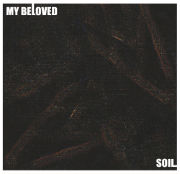
Home
|
MY BELOVED - SOIL
(self-released LP http://bit.ly/10RIMbd)
Specialising in long and atmospheric workouts, Soil the latest release from My Beloved, finds the band in fine fettle offering seven tracks that drift and rise, the whole album like floating in a vast ocean with no sight of land,the waves swelling all around you. On “The Theatrical Kill”, the sound becomes more intense with every second, the dramatic climax the perfect foil for the gentle beginning of “The Unsaved” that glistens straight after, a truly beautiful piece, a floatation tank for the soul. More loveliness is found in the piano lines on “Black Cactus”, as well as the soft drone of “Part of It All”, these two tracks merely the starters for “The Drought” the epic album closer, a huge and drifting piece that transcends time, quietly eroding reality as it goes. Whilst not reaching the same sonic fury as Mono, fans of that band will find much to love here, the music tranquil and headed for deep space. (Simon Lewis) |
| |
|
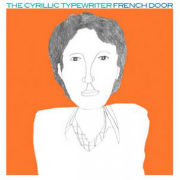
Home |
THE CYRILLIC TYPEWRITER - FRENCH DOOR
(LP from Jazz Records)
Walking their own curious path, The Cyrillic Typewriter are highly impressive on their album “French Door” a mixture of pop, art and psych with hints of Beefheart, The Eels, Olivia Tremor Control and Super Furry Animals creeping from their pores. Mainly however, they are their own band, inventive, playful and always suprising. To be fair it took me a few plays to get into the groove of the record, but when I did it was if the room lit up, melodies suddenly spring from the walls, sounds and textures wrapping themselves around me and the lyrics whispering surreal tales in my ear. This I feel is one of the strengths of the songs, an ear for detail that goes way beyond the norm, you know that every second of the tune has been scrutinised and perfected, no moment wasted, with “An Arrow Pointing in” or “Boxing Arenas” being personal favourites although the album works beat as one entity. (Simon Lewis) |
| |
|
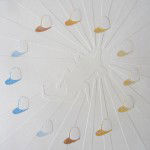
Home
|
THE LUCK OF EDEN HALL - ALLIGATORS EAT GUMDROPS
( CD from www.theluckofedenhall.com )
Dealing in what could be described as classic psychedelia, The Luck of Eden Hall have proved themselves master practitioners of the art, each of their previous releases liberally spiced with some top tunes. However, on this release they have pulled it all together to create their finest moment so far, a fantastic collection that recalls the heady days of swinging London, which is no bad thing in my book.
Opening with the short and sweet piano led “High Heeled Flippers”, a song that sounds like it could have fallen of the back of “Revolver”, the peace is shattered wonderfully by “Bangalore” a sitar drenched psych rocker, that has fuzz, harmony, solos and a manic stomp packed into its three minute groove, sounding like it could be an album favourite and igniting the album with style. After the paisley shimmer of “Ten Meters Over The Ground”, think Dukes of Stratosphear meet The Hollies, we are treated to the wonderful “Summertime Girl”, the first of two excellent songs written by Bassist Mark Lofgren, the rest of the album being penned by Gregory Curvey, the main man behind the band.
Suitably strange both lyrically and musically, “Amoreena Had Enough Today” Manages to sound like The Eels and The Pretty Things, the tune having a languid hazy atmosphere and a great middle section. With some fine backward guitar to begin, “Green Faery” ups the tempo again, getting your head spinning nicely, the lava lamp well and truly warmed up by now, which is just as well as the beautiful and melancholic “Wasting the Days of Youth” swirls your brain outwards,a gorgeous tune that is beautifully produced, kissing the sun with ease. Next up “Goodnight Anne Berlin” is the second song penned by Mark Lofgren and possibly one of my favourites, a jangly guitar taking the song on a Byrdsian flight to the sweet spot, that is matched by “A Carney's Delirium” the recorder intro and arrangement reminding me of Gorkys, although the song has an identity and atmosphere all of its own, as well as some wonderful guitar playing towards the end.
Nice and noisy, “This is Strange” allows the guitar to run free with some great riffing and power chords, demanding that you turn it up to appreciate its' splendour, reminding me of The Small Faces in freakout mode. Finally the album closes with another rocker as the title track displays a sense of fun and a kaleidoscopic heart that makes you smile.
One of the strengths of this album is the running order, each song complementing the one before and after, couple that with the sheer quality of the songwriting and you have a collection that will be played for a long time to come. Limited to 200 copies and worth picking up sooner rather than later. (Simon Lewis) |
| |
|
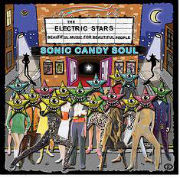
Home
|
THE ELECTRIC STARS – SONIC CANDY SOUL
(CD on Detour )
Debut album from Mancunian quartet bristles with energy and a bevy of influences from snarly Stones to trippy Floyd and giddy glam. It’s impossible to escape their native DNA for producing bubbly Brit pop danceteria delights (perhaps best exemplified on the opener ‘136’ with its musical mantra: “Beautiful Music for Beautiful People”), but the detour into soulful and bluesy, introspective balladry (‘Alison Williams’, ‘Old Fashion Girl’, ‘Isolation’, ‘Bedtime Stories’) adds a welcome (if perhaps a little too frequent) diversion that many debuts lack.
Chiming guitars ring throughout and arrangements are tight without being afraid to wander into the outer reaches of psychedelic exploration (‘I Want You’’s extended coda and the groovy, laidback, Primal Scream-meets-Spiritualized ‘Blind’ – complete with a soaring gospel chorus). And while ‘Stoned Again’ may go to the Primal Scream/Spacemen 3 well once too often, there’s nothing wrong with reminding everyone why the Mick Taylor-era was the bad boys of rock’s greatest.
I’m also glad to hear the lads kick out the jams with the balls-to-the-wall ribaldry of ‘Not Man Enough’ that fondly recalls Swedish punky brawlers The Hives and Caesars Palace. Now that they’ve demonstrated they have a tender side via the (perhaps one too many) tearjerkers mentioned above, I’d like to hear more of this grubbier side. But overall, this is a promising debut that lives up to its title – a little bit o’ soul and a lot of sonic candy – and augurs well for better things to come. Definitely one of the key bands to watch in 2013. (Jeff Penczak) |
| |
|
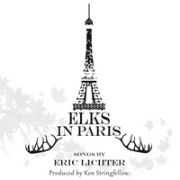
Home
|
ERIC LICHTER and KEN STRINGFELLOW – ELKS IN PARIS
(CD on Diamond Market )
This collaboration between two Terrastock 4 veterans (Lichter with The Green Pajamas and Stringfellow with The Minus 5) is a bit unusual in that Lichter wrote and sings all the songs and Stringfellow plays all the instruments (except the drums, which are unobtrusively provided by Mike Dumas). The album was recorded at Stringfellow’s home studio in Paris and comes a full decade on from Lichter’s debut, Palm Wine Sunday Blue (Parasol, 2002). Most Green Pajamas’ albums feature a Lichter song or two, which provide a nice contrast with Jeff Kelly’s poppier tunes. Lichter is a bit more subdued, perhaps even melancholic than Kelly and that easy going vibe carries over here. Opener ‘A Plan So Beautiful’ has a warm, Elliott Murphy vibe (another artist who perhaps not coincidentally has made Paris his home base) and Lichter’s relaxed vocals occasionally tip over into Tom Petty territory – not a bad thing at all. You might think that one musician playing all the instruments might make the record sound a little flat, but that’s not the case at all. Little flourishes like the mandolin on ‘Subway To The Sun’ and the beeping effects on ‘Back To The Best’ lift the songs out of the ordinary, and Lichter’s swirling melodies and friendly, guy-next-door, conversational vocals do the rest.
‘Posh’ gallops along with a childlike, carousel music box melody that make it perfect for little ones to sing at gatherings (I’d love to hear this on that cute merry-go-round at the Trocadero across from the Eiffel Tower) and New York singer-songwriter Andrea Wittgens adds perfect harmonies to ‘Leonard Street’. ‘Coroners Motel’ is a jaunty little story-song that’s perfect for Paul Simon, although Lichter’s own reading is one of the album’s many highlights. Then there’s ‘Fantastic’, a bright and bouncy pop tune that could be a big hit if released as a single/album teaser.
Perhaps it’s because these songs were written across a ten-year period and have all had a chance to mellow with age, but these are some of Lichter’s finest compositions and the little touches that Stringfellow adds to fill in the nooks and crannies leaves us with one of the most pleasant listening experiences of the year. It’ll leave you with smiles all around and brighten up even the sourest days. There’s a touch of Paris that infects the songs that is best appreciated if you’ve been there: a dreamy stroll across the Seine bridges, a melancholic visit to Montmartre, a romantic picnic on Champ de Mars…. This is the perfect soundtrack for all of that and more. Others will find this a welcome valentine to a beautiful city and yet another reason to pack your bags. Oh, and the title is a brilliant pun that I’ll leave to you to unravel! (Jeff Penczak) |
| |
|
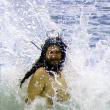
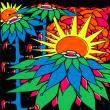
Home |
BROTHER ONG - DEEP WATER VIBRATION
EVENING FIRES - LIGHT FROM ON HIGH
(CDs from www.dwacres.com)
As you are probably aware, Brother Ong is the latest incarnation of one Mike Tamburo, a musician whose music has always strived to find an inner path, a journey that is forever evolving. Recorded live to 2-track, as most of his music is, this album features the sounds of the Shahi Baaja (http://en.wikipedia.org/wiki/Shahi_baaja) , autoharp, vibrational accumulator and effects, the instruments blended together to create blissful waves of sound that soothe and caress. On the opening track “Deep Memory of a Past Projection” strings chime and drone together with richness and purpose for 16 minutes, a glorious ride that is spiritual and uplifting, without ever being New Age or flaccid. Possibly being the perfect soundtrack for those films of sped-up cloud formations, “Six White Horses” has a more drifting nature, washes of sound that are light and elegant, the track ending far too soon for my ears. Finally, the twenty minute “Cycles or Sagas” is a sweet golden drone that sparkles with inner light, delicate notes dancing in a sacred pool of sound, allowing your troubles to float away, at least for a while.
On their latest collection Evening Fires, continue their quest for the psychedelic grail, the light in the middle of the cosmic forehead, their search drawing ever closer to the truth. On “Pulpit Rocks”, a jangly guitar riff is swathed in robes of synth chords, a fine drum groove keeping the piece moving towards heaven or at least an early seventies German approximation. This timezone remains firmly in place for the excellent “Strange Meridians (I)”, wherein the ghosts of Edgar Froese and Claus schultze are to be found roaming vast corridors of sound in search of that lost chord.
Changing tack, “Greet the Brand New Day” bring a lightness to the proceedings, the band getting into a groove and letting unfold for eleven lovely minutes, the piano and drums entwining together beautifully. Next up, title of the day, and possibly best track goes to “Magic Hippy Forcefield”, an atmospheric haze of sound that advances out of the speakers like a sandstorm, finally gaining a sense of rhythm halfway through, the pulse guiding you home. To end, the equally excellently named “The Molten Fingertips of God Almighty” is a stoned West-Coast jam that will make you smile as you are carried away by its kaleidoscopic whirl of joy, the guitar playing of Kevin Moist touching the robes of God as he walks his quest.
Evening Fires are a band I never tire of, on this album though they have excelled themselves, their finest moment, a psychedelic classic that should be enjoyed on a regular basis. (Simon Lewis) |
| |
|
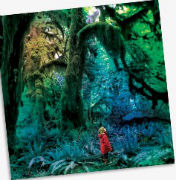
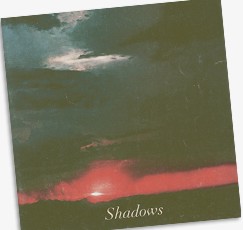
Home
|
JACCO GARDNER - CABINET OF CURIOSITIES
MASTON – SHADOWS
( CDs from www.troubleinmindrecs.com)
Hailing from the Netherlands, Jacco Gardner creates cheerful sunshine infused psychedelia on his latest album, the waft of incense and dancing barefoot in the grass clearly to be found among its paisley grooves.
Starting as it means to go on, “Clear the Air” leaps in on a roll of drums before revealing itself to be a soft and gentle tune with harpsichord, strings and a bright production that allows the melodies to flood out. With a nod to Syd, “The One Eyed King” is a fabulous track that would be at home on the Rubbles compilations, as would most of this album, a drifting slice of Psych-Pop that reminds me of Kaleidoscope, The Idle Race and The Moody Blues.
As the album progresses, there is no getting away from its retro nature, due to the nature of the songs and possibly aided by the fact it was pre-mastered by Jan Audier, who also engineered the likes of Q65 and Golden Earring, using analogue equipment. Whatever the reason, there is also no denying the quality of the songs either, each one a tiny nugget of joy that transports you back to a mythical sixties that may or may not have existed.
Having said all that, there seems little point in detailing each track although the brilliant “Watching the Moon” is worth seeking out, whilst the title track itself is a mesmeric piece that will have you grinning with appreciation. The other thing you notice as the album moves along is the predominance of keyboards, something that gives the album its own character and works perfectly in the context of the songs. In the end though it is the sheer quality of the collection that will win you over, whichever decade it was created in.
Opening with the instrumental “Strange Rituals”, The music of Maston also has that sixties sunshine feel, the track sounding like the opening sequence to a psychedelic spy series, you can almost see the hero driving down the coastal road in his open-top car (red, of course), a gun casually slung on the passenger seat. On “(You Were) In Love”, that vision remains, the vocals only adding to the retro feel, The Spirit of Brian Wilson looking on and nodding in appreciation.
As we move on the atmosphere changes with “Messages” having a minor key jangle at its core, whilst “Young Hearts” sounds like pop music created by a sad and dishevelled carnival band, which is no bad thing in my mind at least.
Throughout the disc there is a moody and dark atmosphere that even seems to pervade the slightly more upbeat tunes, giving the album an identity which is cemented by the songwriting quality.
Entirely written and played (except for the harp) by Frank Maston this collection brims with confidence, displaying the talents of someone at the top of his game, each track lovingly crafted and finished at just the right moment. Approach freely, especially if the idea of an imaginary soundtrack appeals, the visions of a spy lurking in you mind throughout the album.
It is always good to discover new artists of quality and this brace is a good example , two discs well worth investigating names to keep an eye on. (Simon Lewis) |
| |
|

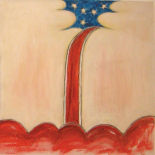
Home |
THE CHILDREN'S HOUR - S.O.S. J.F.K
JOSEPHINE FOSTER - BLOOD RUSHING
(CD/LP/DL from www.firerecords.com)
Originally released in 2003, The Children's Hour are a naïve folk duo featuring the talents of Andy Bar and Josephine Foster. This album marks the recording debut of both artists, the 13 songs highlighting a gentle side, the tunes reminding me of Vashti Bunyan in their wide-eyed innocence and easy charm. On opening track “Little Boy” it is obvious who the vocalist is, although the voice lacks the mature power of Josephine's later work, instead exhibiting a fragile and delicate nature, giving the song a warmth that will delight the ear. Equally as charming is the guitar playing of Andy Bar, simple and melodic, the fretwork dances around the vocal lines, producing wonderful harmonies and songs that will soon become old friends. Over the course of 45 minutes the listener remains engaged and relaxed, the drumbeat of “Kindness of Strangers” (and other tracks) adding a sweet groove, whilst the country twang of “The Lumberjack Song” (not the Monty Python tune) features one of the best vocal performances on the disc. Not to be outdone, the guitar playing on “Adoption Day” is perfectly understated and oh so precise, whilst the title track itself is simply beautiful, the melody line hooking you in and hanging on to your ears.
Fast-forward to 2012 and you will find “Blood Rushing”, the latest offering from Josephine Foster. To be honest the transformation over nine years is amazing, although you can see the link between these two album, it is just that here the songwriting is mature and confident, the song having a distinct identity driven and defined by the voice that soars over each song caressing the words with love and ownership. Featuring a variety of Guitars, Indian Violin, Jews Harp, Skin Drums and Indian Flute, the sonic palette has widened as well, each sound use to colour the song adding nuances and textures to the recordings. After the gentle beginning of “Waterfall”, the album hits its stride with the epic vista of “Panorama Wide”, old rhythms, melodies and spells combined to create and a song filled with great power.
With a more experimental beginning, “Sacred is the Star” soon meta-morphs into another classic, folk music inspired by ancient things but modern and relevant in nature. As this album continues you are drawn more and more into its landscape, visions becoming more frequent, the melodies curling around you like smoke. Halfway through you strike gold with the beauty of the title track, a sweet and haunting piece that is complex in its simplicity, harking back to the music of The Children's Hour, a sublime violin snaking through the music adding some melancholy bite.
Designed to wake you from your dreams, “Geyser” is a stark, harsh piece that is like nothing that has gone before, distorted and metallic (not metal) in nature, a startling track that certainly surprised me. Finally, “Words Come Loose” weaves softer magic,a earthy folk/country tune that leads you out, the music rich and played with sympathy and skill, as it has been all the way through this fabulous album.
Sometimes you hear an album that you know you will fall in love with, this is one of them. (Simon Lewis) |
| |
|
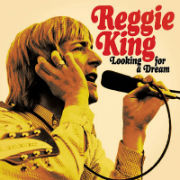
Home |
REGGIE KING – LOOKING FOR A DREAM
(LP/CD on Circle Records)
Reg King was the lead singer in The Action, who are the subject of one of the most comprehensive biographies we’ve ever encountered, In The Lap Of The Mods, which we reviewed in November. After the band morphed into Mighty Baby, King was surplus to requirements and embarked on a brief solo career, culminating in his debut solo album in 1971. This is NOT that album, but a collection off demos and acetates that he recorded two years prior with backing from most of Mighty Baby. Whether you view this as the long lost Action or Mighty Baby album is immaterial, for King is the dominant force across these meticulously restored tracks. First off, fans of the Action’s blistering soul stomping or Mighty Baby’s navel-gazing psychedelia should be forewarned that many of the early songs here are more in a pop vein with mostly acoustic backing. The masterful sequencing (by Circle head Peter Wild) highlights the bands’ transitional phase, from the poppier Action-styled numbers up front to the mellower, psych-prog grooves of Mighty Baby towards the end. Why they were cast aside is unknown, but their excavation and preservation (and massively impressive “clean up”) is one of the great finds of recent years. It’s almost as if the band tried out this new material as one of many potential musical directions to explore before heading off into more psychedelic territories. One could also argue that this is what Mighty Baby might have sounded like had King remained. But one listen to either Mighty Baby album clearly illustrates that their new sound had little room for vocals.
‘So Full of Love’ is an excellent example of that transitional sound that the band undertook at the turn of the decade. Vestiges of the Action’s exquisite harmonies and pop sensibilities are married to ethereal folk-psych and neo-prog trappings. ‘Merry Go Round’ and ‘Thinking About Getting Out’ highlight King’s soulful vocal stylings, while ‘Picking Up Nancy’s Grin’ is a whistful, nostalgic ballad somewhat reflective of early Yes. ‘In and Out’ is another highlight, a floating rumination on the vagaries of love lifted heavenward on the wings of Ian Whiteman’s angelic flutework. That, the tearful folky ballad ‘Live Forever’, the dreamy flute-and-congas-driven ‘Magenta’, and ‘Putting Something Together’ are the most Mighty Baby-ish tracks and they reflect a definite departure from the soul-tinged stompers the Action specialised in. These are more relaxed … meandering … exploratory. Gone is the short burst of high energy that was tailored for the pop market in favour of festival-styled, West Coast psychedelia that came to trademark the Mighty Baby oeuvre.
So whether you’re an Action/Mighty Baby completist or a fan of 60’s British-cum-West Coast psychedelia, these recordings are an essential purchase, providing a warmly nostalgic listening experience for years to come. The recording quality is release-ready, the restoration of some of the dodgier acetates is impeccable (kudos to Ian Stead), and the closing pair of ‘They Must Be Talking About Me’ and ‘You’ll Be Around’ – achingly beautiful duets with just King and Whiteman (keyboards) – are fitting tributes to this gifted singer/songwriter that cancer took from us way too soon in 2010.
[Note for vinyl junkies: the LP version omits three tracks that were previously released on the limited edition 10” EP, “Missing In Action” (Circle, 2007).]
(Jeff Penczak) |
| |
|
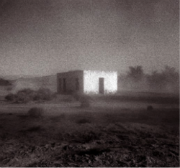
Home |
GODSPEED YOU! BLACK EMPORER – ALLELUJAH! DON'T BEND! ASCEND
(LP, CD, DL from Constellation Records
http://cstrecords.com/gybe)
Hard to believe that it’s been a decade since GY!BE’s last release, Yanqui UXO, since when they’ve disbanded, reformed, and become a fixture of the All Tomorrow’s Parties live circuit. Meanwhile, contemporaries have either perished (La Bradford) or have endured with diminishing returns (Mogwai), while GY!BE can lay claim to having spawned a whole sub-genre of atmospheric post-rockers, few of whom have come close to capturing their essence.
So what’s changed, if anything? Well, the aesthetic is still austere and mono-chrome, the boys (and girls, perhaps) in the band are still largely anonymous and remote, while the music is still at times intensely challenging and more often than not, rewarding. Of the four tracks here, two of them clock in at 20 minutes each - respectively “Mladic” and “We Drifted Like Fire” - and which are in fact re-workings of “Albanian” and “Gamelan”, both of which have been set list staples since their unassuming return to live duties a few years back. Opening number, “Mladic”, is the most vital of the four cuts and showcases GY!BE at near optimum. A spoken-word introduction ushers in droning strings and a succession of wailing guitar notes, evoking circling carrion birds, before a pounding rhythm lays the foundation for wild Balkan or other Near Eastern abandon and some serious cranial assault. “Mladic” eventually subsides into what, depending on your breadth of vision and sphere of travel, sounds either like Mongolian yak herders bashing out centuries old percussive rhythms over a vast and windswept central Asian plain or else the sort of neo-tribal thumping which used to accompany a Midsummer’s dawn at solstice music festivals held someplace in the West Country (as often as not the product of several people bashing coke tins together).
The rest of the album, worthy as it might be, gives the impression of riding on the coat tails of this hugely impressive opener. “The Helicopters Sing” has a nagging quality and that rather incorporeal Boards of Canada stamp to it, and as it progresses the sawing violins and the droning reeds bear down on you. Eek! It’s all nicely discordant, a bit like stumbling upon a couple of interesting late night radio stations between channels. “We Drifted...” is on the whole more restrained and melodic than “Mladic”, and it takes a couple of listens to properly appreciate its subtle nuance and understated appeal. Of course, with quiet comes loud, and occasionally, scary, but without ever quite coming close to blowing you away in the same vein as the lead track. Bringing matters to a head “Strung Like Lights at Thee Printemps Erable” (like “Helicopters” clocking in at just over 6 drone-like minutes) steers us slowly, safely, if somewhat spookily into dock.
Allelujah! Don’t Bend! Ascend is, then, a neatly symmetrical and evocative and occasionally striking work worthy enough of the canon. One might fleetingly wonder if the world hasn’t perhaps moved on just a little and whether in fact the Canadian Collective commands the same appeal in 2013 as it did at the turn of the millennium. (Affirmative) answers on a dog-eared, sepia coloured postcard depicting some bleak and desolate scene to the usual address, if you please.
(Ian Fraser) |
| |
|
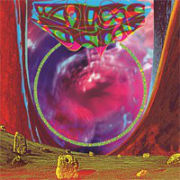
Home |
ALIEN BALLROOM – ZERO PAC A.D.
(LP from Agitated Records )
From the same label that recently brought you Axis by the mighty Mugstar, an early contender for album of the year hereabouts, Alien Ballroom’s album is subtitled “a Koolaid production”; and therein lies the sole clue to the identity of the perpetrators (unless you include the psychedelic oil-wheel photo of the band in all their live pomp and glory on the cover) – Alien Ballroom were at one time named Koolaid, and we reviewed them as such rather favourably last year.
On side One of 'Zero Pac A.D.' we find the band exploring not dissimilar territory to before, with a twenty-minute long sonic meltdown entited 'The New Revelation', an acid-drenched masterpiece of ryhthmic drumming, repetetive Germanic riffs and a fabulous assortment of found-sounds including, rather incongrously, a dog’s woof and a bird’s tweet as well as the inevitable air-raid siren. The nearest reference I can come up with is the brilliantly bonkers ‘Do It For Fun’ 12” by The Bachelor Pad from the late 1980s.
The flipside is more song oriented, assuming one is willing to stretch the imagination a little when it comes to the term “song”, with six tracks that range from the pastoral insanity of ‘Banks of the Dee’ to the succinctly catchy ‘Ringstone Round’ and closing with the biker-doom metal of ‘Forty Ton Rock.
500 copies apparently, and a free download code with every one of ’em. I suggest you move quickly. (Phil McMullen) |
| |
|

Home |
FLOWERS MUST DIE – FLOWERS MUST DIE
(LP on Rev/Vega Records)
Co-released by Rev/Vega and the Kommun2 label, this third record by Sweden’s Flowers Must Die sees them pushing on from an already fine start – this time 500 copies have been pressed, and better news still - it’s a double album, which gives this primarily instrumental outfit the space (ha!) they need to seriously stretch out. With a name that references an Ash-Ra Temple song and a lineage that can be traced back to Träd, Gräs o Stenar, there’s no surprise that Flowers Must Die’s modus operandi references space-rock, Kraut-rock and fuzzed out blues grunge; but there’s a lot more to the band than simply layers of Hawkwind and Amon Düül II influences sandwiched by the occasional Flower Travelling Band-inspired number (the excellent Köket Brinner).
The album features eight songs recorded over the 4 years up until 2012, the songs interestingly starting off numerically where the previous record left off, i.e. with track number 8, the monotone trance-psych of ‘Jämfota’ which sprawls majestically across side A. I confess to rather admiring that approach, the band cataloguing every song as a separate entity, thematically progressing throughout their career.
‘Ökenvandring’, which takes us all of side C, is the highpoint of the whole kit and caboodle – we’re transported straight back to a 1970s German dance-hall watching the mighty Man-band thundering through a tumultuous freak-out, with Deke Leonard’s feedback filigree dancing off the rhythmic drumming of Terry Williams.
Finally over on side D, ‘Blågylta’, is a slow, feedback-drenched stroll through the jazz-flecked outer extremities of space-rock, still with that insistent beat at the heart of the composition. Once again it’s impossible on hearing this not to reference Wooden Shijps. And just as the last album closed, this one finishes with the phased, pulsating throb of ‘Mot and Ra Väggen’ once again reminding me of Hawkwind, which I can only repeat is no bad thing.
Yet another seriously recommended album from Flowers Must Die, easily one of my favourite bands anywhere in the world right now. (Phil McMullen) |
| |
|

Home |
PATRICK LUNDBORG – PSYCHEDELIA: AN ANCIENT CULTURE, A MODERN WAY OF LIFE
(book published by Lysergia)
In what will surely become the definitive thesis on the subject, Swedish musicologist, Information Scientist, philosopher and consciousness explorer Lundborg’s self-help manual for the brain traces the history of Psychedelia, beginning with the pre-historic Eleusinian Mysteries and culminating over 3600 years later with Lundborg’s Unified Psychedelic Theory which explores, among many other things, the causality behind intellectual and spiritual psychedelic sensations which may someday bring us closer to achieving the supra-state which birthed our unconsciousness. Along the way, our trip encounters the philosophical musings of Plato, Sartre (existentialism), Husserl (phenomenology), Levi-Strauss (structuralism); the psychedelic experimentation of Timothy Leary (Lundborg is the first to uncover Gerald Heard’s “vital influence” on Leary’s The Psychedelic Experience), Terence McKenna, Alan Watts, Aldous Huxley; the visionary Blake, psychedelic Shakespeare (The Tempest), T.S. Eliot (a unique examination of The Waste Land), along with other familiar names to psychedelicists, from Kesey & his Merry Pranksters, to Augustus Stanley Owsley III, Dr. Albert Hofmann, Gordon Wasson, and a whole host of others – a virtual Who’s Who in the psychedelic community. Lundborg demonstrates the impact psychedelics had upon the writings of each of these historic figures in succinct language that can be understood by the average reader who doesn’t possess his academic credentials. Could some of mankind’s greatest thinkers have been influenced and inspired by psychedelics? Lundborg makes a strong case in what he ultimately defines as a psychedelic phenomenology. Rooted in the work of Husserl and the radical empiricism of William James, Lundberg suggests that it is this psychedelic phenomenology that “offers the best clarification and least distortion for a complete understanding of human consciousness.” And you thought you were just “getting high”!
The book focuses on what Lundberg classifies as the four major serotonergic psychedelics: LSD, mescaline, psylocibin, and DMT and their effects on human subjects. He devotes an entire chapter to the historical use and geographical and sociological dissemination of these drugs around the world. Unlike previous literature on the subject which primarily focused on the psychological, medical, religious, and political implications and uses of psychedelics – mainly because these were the professions that had legal access to the material, Lundborg presents the case for a Psychedelic culture with a lifestyle of its own realised through art, music, philosophy, etc. Most importantly, Lundborg presents his theories not as an academician in highly structured language that might require an advanced degree to understand, but in language that the casual psychedelic explorer can absorb. Having said that, the present work could easily find its way onto the required reading lists or as the central text book of university professors offering psychedelic studies as part of a classroom curriculum or as an adjunct to philosophical or psychological analysis.
Time and again, Lundborg concludes that it was the narrow-minded analytics that scientists imposed upon psychedelic exploration in the ’50s-’60s that resulted in failed attempts to categorise or describe the psychedelic experience in metaphorical language (Lundborg lists 23 such metaphors and allows for many others) that was comfortable for the analyst. Perhaps it is time for “a moment’s reflection to find a higher abstract structure into which this truly radical experience might fall.” In short, one must realise and accept that the psychedelic experience cannot be generalised into specific compartments (or metaphors), but must be understood and accepted as a direct, personal experience that is unique to the individual explorer and cannot be interpreted, metaphorised or rationalised. It simply tells of what was seen and felt.” The Eleusinians knew and understood “the importance of a direct, personal experience of the otherworldly”, but this knowledge was forced underground by a dominant Western culture for 2,000 years. Using 20 years of research and half a million words, Lundborg attempts to bring it back into the open and he succeeds with profound alacrity and lucidity.
Lundborg also presents “psychedelic” explanations (or readings) of all the major art forms, from novels and theatre to cinema (Apocalypse Now, Forbidden Planet) and music, from the proto-psychedelic fantasy electronica of the ’50s-’60s to the “bachelor pad Exotica” of Les Baxter and Eden Ahbez to the more overt psychedelic music explorations of Watts and Kesey’s Merry Pranksters. His arguments for finding the roots of ambient music in the Barrons’ soundtrack to Forbidden Planet and the importance of ’50 Exotica to psychedelic music are unique and well-founded, as is his brief but rewarding analysis against a psychedelic reading of that acidhead favourite, Fantasia. In fact, his chapter on the psychedelic influences in music (prefaced with a quote from the decidedly un-psychedelic John Cage), is highly recommended for musicologists interested in tracing the history of psychedelic music, from early electronica, classical, and avant garde, through ’50s Exotica, rock and ultimately, ambient techno and psychedelic trance music of the last 20 years. It also presents a hell of a laundry list for building your own psychedelic music library! What’s most important in this section is Lundborg’s explanations of why the music is attractive to a psychedelic explorer and not just a list of records that have a psychedelic bent. He even offers salient explanations of what causes the visions one sees during a psychedelic trip. Of equal import is his chapter “New Maps of Innerspace”, wherein he discusses the difficulties of mapping a psychedelic trip – how does a psychedelicist resolve the dichotomy of observer/observed in order to describe their psychedelic experience (sights, sounds, etc) in language understandable within baseline reality? This seemingly futile exercise is discussed in great detail, although a solution may be frustratingly unavailable at this time, although the “concentrated phrase” approach of Leary, Ginsberg, and McKenna offers encouragement.
Other chapters examine the role of psychedelics in psychiatry (Delysid, anyone?), the military, the Mayan, Aztec, and Incan civilizations – in fact, there is some speculation among scholars that psychedelic plant drugs initiated the visionary experiences that manifest themselves in both art and religious beliefs – even the whole notion of Santa Claus is credibly compared to the after effects of Amanita muscaria mushroom ingestion! His chapter on the history of the clandestine production and distribution of LSD (and various related compounds) and the tale of the Brotherhood of Eternal Love reads like a high stakes thriller and is just one of many fascinating aspects of this thoroughly researched and highly readable and entertaining book, although the chapters on mycology and other psycho-active plants may be rough going for anyone without some rudimentary botanical knowledge. In fact, by addressing almost every walk of life, Lundborg has in effect created The New Psychedelic Bible – a sort of Anarchist’s Cookbook for any and all discerning psychedelicists.
Terrascope readers will no doubt enjoy the trawl through the proliferation of anti-LSD albums that flooded the market in the late ’60s, the British and international psych/acid folk scene, the independent and underground ’70s stoner psych scene, and extended discussions of the acid-punk scene of the mid-60s (particularly Tommy Hall and the 13th Floor Elevators) as Lundborg explores the sociological Bermuda Triangle that provided “a fortunate convergence of youthful zeitgeist, psychedelic experimentation, and explosive developments within rock music” that resulted in “a remarkable moment usually overlooked by rock music historians.” Unfortunately, “this fertile hybrid of psychedelic drugs and rock music barely made it past its first season [essentially 1965-66] before socio-cultural elements unrelated to both hallucinogens and pop culture infested its soil. In 1966, the celestial bodies were perfectly aligned for the conception of new music from a free-spirited, psychedelic perspective.” In a few years, the hippies and counterculture and Timothy Learys of the world would turn Psychedelia into a three ring circus of hucksters, charlatans, and opportunists. It’s been said that the psychedelic scene was over (or at the very least ruined) by the so-called Summer of Love of 1967 that most people point to as its apex. Lundborg astutely points out that “[p]ast discussions tend to be confused by the fact that the 1960s spanned two distinct phases, with a watershed point right in the middle… [and] tell us very little of the changes that psychedelic culture underwent from entering the decade as a research field for psychologists, until exiting the decade as a street drug with a violent reputation.” His argument that the “real” Summer of Love was actually in 1966 between the Trips Festival (January ’66) and the Human Be-In the following January is very convincing and informative, as are his behind-the-scenes analyses of the events that made San Francisco famous. He also points out that, interestingly, rock music played a very small part in the psychedelisation of the West Coast ca. 1966, as most bands hadn’t got their acts together until 1968. Lundborg concludes that this “zodiac cycle between the Trips Festival and Human Be-In is perhaps the closest Western culture has come to establishing a new Eleusis.” Extended discussions of the Diggers and Pranksters help flesh out the psychedelic San Francisco scene.
Numerous chapters and much real estate is also devoted to academic discussions about psychedelic cinema, the techno dance, trance, ambient and psychedelic electronica scenes of the ’90s, and the history of psychedelic art, television (e.g., The Prisoner), and literature (particularly personal favourites like Herman Hesse, Aldous Huxley, Thomas Pynchon, Phillip K. Dick, and Robert Anton Wilson). There’s even an entire chapter dedicated to “Psychedelic Music Peaks” wherein Lundborg identifies the essential ingredients of psychedelic music. Finally, someone has defined what “psychedelic music” is, but you gotta buy the book to learn the five key ingredients. Let’s just say it’s a lot more than your neighbour telling you “It sounds great when you’re stoned, man”. While strict adherence to his principles opens the door for heated debate (e.g., “Pink Floyd’s A Saucerful of Secrets fails to produce the visual-emotional effect of space travel that could have turned it into a powerful psychedelic experience.”), the fact that he lays his cards on the table and offers a line in the sand for all comers to cross promotes healthy discussions, a sure sign that his book is hitting the right buttons. (Re: The Floyd, no less an authority than our own Terrastock traveller Mick Farren agrees with him, stating “I often regretted that the Floyd assumed such a crucially influential role in the London version of Psychedelia. They seemed so Oxbridge cold in their merciless cosmos: the Stephen Hawkings of rock & roll.”)
Elsewhere, Cream’s Disraeli Gears is “pathologically negative”; The Pretty Things (after a promising start) “darkened into the full-length depression of S F Sorrow”; Traffic are “somber, controlled, and decidedly non-psychedelic”; the Stones’ Their Satanic Majesties Request is “one of the best ‘bad trip’ albums ever made” and The Kinks and Who “clearly found the idea of ‘acid music’ removed from their basic nature”. Looking for a fight? The line forms to the right. This might include some of the most argybargy-baiting commentary since Joe Carducci’s Rock and The Pop Narcotic!
Lundborg also offers fascinating analyses of the frightening Brotherhood of Eternal Love and the anti-hippie, anti-flower power (and pre-Manson) Lyman Family which grew out of Jim Kweskin Jug Band banjo player Mel Lyman’s fertile acid-fried imagination and messianic grip on its leader. He also traces the history of psychedelic/hippie/alternative lifestyle communes, including the Nature Boys of the ’40s and several German subcultures from the late 19th century. His argument for why most psychedelic communes are doomed to failure is enlightening, as is his chapter on religion, which analyses DT Suzuki’s controversial theory that all major religions are based on psychedelic drug experiences. He also addresses the misperceptions that led many to turn to Eastern religions, demonstrating that psychedelics are not the shortcuts to enlightenment that many mistakenly assumed.
While it’s nearly impossible to find fault with anything in this major work, I would have preferred if Lundborg included a bibliography. Obviously, there are thousands of books addressing various aspects of a field as vast as psychedelia. While each chapter’s notes include references to the resources cited within, it’s left to the inquisitive reader to hunt down the helpful publication information. It’s also awkward to have to visit Lundborg’s excellent companion website (www.lysergia.com) to access the Index. (Even though one can print it off for future reference, it would have been nice to have it self-contained). Along the same lines, Lundborg delves quite deeply into the various physiological effects of the psychedelic drugs he analyses, and some readers may find some of these chapters a little rough going. A general glossary of even the most rudimentary terms would go a long way to alleviating the frustration some readers may encounter when trying to unravel the more scientific- and botanical-based chapters. And I would personally have preferred more attention paid to the psychedelic revival of the ’80s and ’90s rather than the short shrift given to the Paisley Underground and Madchester scenes and the post-rock and Terrastock bands at the expense of an in-depth history of the Ecstasy scene and the impact of psychedelics on the Electronic Dance Music (EDM) industry, from techno and acid house through the Balearics in Ibiza, the Goa scene in India and the various permutations of Psychedelic Trance, Dark Psychedelic, ambient techno, and psychedelic ambient in the 21st century. However, I must congratulate him on singling out our old friend Nick Saloman, via Bevis Frond’s “impressive debut, the self-released Miasma which was pieced together from home recordings, but came across as a personal, powerful statement.”
But these are extremely minor quibbles for a work of such magnitude and importance. It’s an early candidate for Book of The Year, one which I will return to often to feed my head, re-energise my mind, and rejuvenate my consciousness. If your psychedelic library already contains the works of Leary, McKenna, DeQuincey, Ludlow, Huxley, Watts, Robert Anton Wilson, et. al., then this will be a most welcome addition.
(Jeff Penczak) |
| |
|
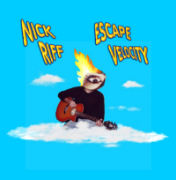
Home |
NICK RIFF - ESCAPE VELOCITY
(CD www.nickriff.com)
After the space rock of “Photon Shift” and the ambient soundscapes of “The Universe is Mental”, Nick's latest shows yet another side to his writing talents, this time having a more mellow folk-rock groove that is very pleasing to the ears. On “Missing Time”, the lengthy opener, the guitars take a relaxed byrdsian approach to things, a sweet vocal melody gently soaring over the top, reminding me of the Quarter After, the song also containing a beautiful, stoned middle section, synths gently burbling over the occasional guitar flourish to great effect. Sounding, possibly, like The Stooges if they were a country rock band, "Infinity" has a nice stompin' but still relaxed riff and some lovely piano running through it, whilst "Psychic Blues" is another pretty ditty with its summertime in the country vibe worn proudly on its sleeve.
To create this album, the drums, guitars and vocals were recorded live at the same time, the other instruments being added later. This approach gives the tunes a definite groove and warmth, something carried through by the melodies also. Reminding me a little of early Sundial, "Too Much To Know" is definitely psychedelic, a wonderful rolling piece that settles over you like a sparkling lysergic snow, although this snow is warm and glowing. Adding some saxaphone to the mix gives "Side Effects" a strange eighties feel, the lyrics making you smile as well. After the sweet psych-pop of "Radiant Beings", the title track itself is a glorious romp across sunny meadows and marshmallow skies, dancing barefoot no doubt, and loving every minute, has some killer guitar at the end too. Finally, "Open Mind" takes eleven minutes to summarise what has gone before, throwing a bit of Neil Young into the mix as well. Another beautifully constructed piece that just flows over you making you feel better.
Whenever I play this album I think it is the best one Nick has released, but then i think that of whichever album i am playing from the man, a good trick that. As it says on the sleeve notes, "Escape velocity with this CD can best be attained at the requisite speed of hemp fuelled thought", he could well be right. (Simon Lewis) |
| |
|
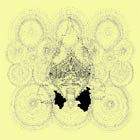

Home |
LICHENS – LITIO FOLK
(LP from www.morctapes.com )
ANNELIES MONSERE/CIRCLE BROS
(Split 7” EP from www.morctapes.com)
Another in the “things I should have reviewed ages ago” series, Morctapes is a label that focuses on quality and individualism, traits that these releases have in droves.
Basically the work of Robert Lowe, Lichens latest release hones in on the voice as instruments, creating a collection of drones and soundscapes that are rich in texture and beautiful to the ear. Opening track “heilogur draugur” is the soundtrack to a time lapse film sequence of flowers opening, clouds fluttering across blue skies, the sounds constructed with care and attention so that every ounce of emotion is clearly heard. Rougher in texture, “Aenemmonae” is a slowly melting, although brief, piece, the sounds dripping from the speakers, whilst “Kopemik Tripnote” is the sound of stillness, silence made sound, a deep drone that develops into a prehistoric mist that cloaks the room, writhing around the furniture, a track that uses instruments rather than voices as its main focus. Like the soundtrack to an intoxicated walk through the forest as the sun rises, “Skogi” has a disorientating feel to it, a sense of displacement that is almost physical but not at all unpleasant. To complete the album, the sixteen minute “Jokla Timabil” encapsulates and eclipses everything that has gone before, a huge range of tones softly blended to create a shimmering drone that is the highlight of a collection that never disappoints.
Splitting a 7” means that there is not going to be much space for each artist to utilise, which in this case, that there is only one track from Annelies, something of a shame as “Remedy” is a fabulous and moody piece, dominated by keyboard textures, sounding like an outtake from the radiophonic workshop masquerading as a pop band.
The work of Wim Lecluyse, the man behind the label, Circle Bros manage to include two songs on the EP, with “Big Fish” continuing the moody electronics theme, another atmospheric piece that is dense and darkly beautiful, descending into drone as it moves. In contrast, “Blue Carpet”, is a stark piano-led track that is glacial and haunting, the music ending far too soon.
Also available is “Summer Eyes” a 12” EP from Felicia Atkinson, sadly however, the promo CD did not play, a shame as it sounds very intriguing, judging from the press release. (Simon Lewis) |
| |
|
|
 |
|

